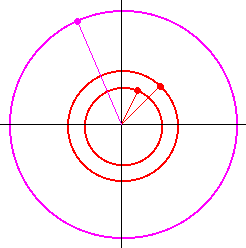 Despite the many similarities between complex numbers and ordered pairs of real numbers, it is important to understand that complex numbers are not just like ordered pairs of real numbers. The algebra is different.
Despite the many similarities between complex numbers and ordered pairs of real numbers, it is important to understand that complex numbers are not just like ordered pairs of real numbers. The algebra is different.
 Despite the many similarities between complex numbers and ordered pairs of real numbers, it is important to understand that complex numbers are not just like ordered pairs of real numbers. The algebra is different.
Despite the many similarities between complex numbers and ordered pairs of real numbers, it is important to understand that complex numbers are not just like ordered pairs of real numbers. The algebra is different.
If we wanted to add or subtract ordered pairs of real numbers, we would typically do it "component-wise". That is, we would work with the first and last coordinates separately; thus:
This is exactly what we did in the examples showing the addition or subtraction of complex numbers: We added or subtracted the real and imaginary parts independently from one another.
With complex multiplication, however, the real and imaginary worlds collide. We do not write
because this would force us to dispense with some familiar algebraic rules, such as the distributive and associative laws. Instead, we distribute and associate and arrive at:
We are then forced by our new rule to convert i2 to – 1 , and the real and imaginary parts of the original numbers became hopelessly entangled in the product. In ordered pair notation, we write:
(a, b)(c, d) = (ac – bd, ad + bc)
As messy as this looks, it turns out to be the complex number with a modulus equal to the product of the original moduli, and an argument equal to the sum of the original arguments! This is easy to see if we use Euler's formula, explored on the following page.
|
|
|
|
| Back to Contents | ||